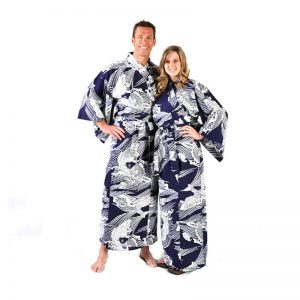For centuries, cotton has been a popular fabric used for clothing. From Japanese kimonos and yukatas to modern-day t-shirts and jeans, cotton is an incredibly versatile material that offers several benefits. In this blog post, we’ll explore why cotton is such a popular fabric used for clothing and why so many people choose to wear it.
Durability and Comfort
One of the most significant benefits of wearing cotton is its durability. Cotton fibers are strong and resilient. This makes them ideal for clothing that needs to last through repeated wearing. Cotton is perfect for garments like denim jeans that need to be able to withstand a lot of use. This avoids stretching out or showing signs of wear and tear too quickly.
Cotton is also incredibly comfortable. It helps keep you cool in hot weather and warm in cold weather. It’s breathable and allows air to circulate around your body. Yet it has the capability of providing some insulation from the elements. Additionally, cotton has a soft texture against the skin which makes it very pleasant to wear and comfortable.
Easy Care
Another great benefit of wearing cotton clothes is that they are generally easy-care. Most cotton items can be machine washed. Cotton kimonos and yukata robes can generally be washed without much fuss. Cold water is recommended as it helps prolong the lifespan of your garment. Washing in cold eliminates much of the worry about damage or shrinkage.
Cotton fabrics have natural properties that make them resistant to wrinkles and creases. This means they look great even after being packed away in a suitcase or worn all day long. They don’t need any extra care or attention. This makes them perfect for those who do not have time or energy to spend on complicated laundry care routines.
Printing Capabilities
Lastly, one of the reasons cotton is such a popular fabric choice is because it holds prints well on its surface. This eliminates fading away quickly after washing or wearing. This means you can invest in items like printed t-shirts, patterned dresses, or kimonos and yukatas with confidence that the print will not disappear after just a few washes. Not only does this make your clothing look more interesting but it also adds extra value. You won’t need to replace your favorite pieces any time soon due to fading prints.
As you can see, there are many reasons why cotton remains such a popular choice when it comes to clothing fabrics! From its durability and comfort to its easy-care nature and printing capabilities. There is no doubt that this natural material offers something special when it comes to fashion choices. This opens the door when you’re looking for something practical and stylish or classic to casual.
You can opt for classic summer yukatas or light summery sundresses made from lightweight cotton. These garments will last long into the future thanks to their superior quality and design capabilities. Chopa offers a large selection of cotton yukatas and kimonos in its online store. You can shop 24 hours a day. Having served over 33,000 customers since 1994, Chopa has gained and earned a strong reputation for customer service, quality robes, and quick shipping. Shipping is free on orders of $75 or more to anywhere in the USA.











